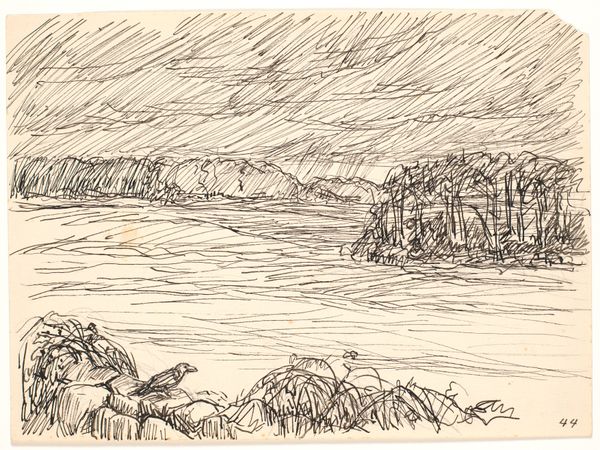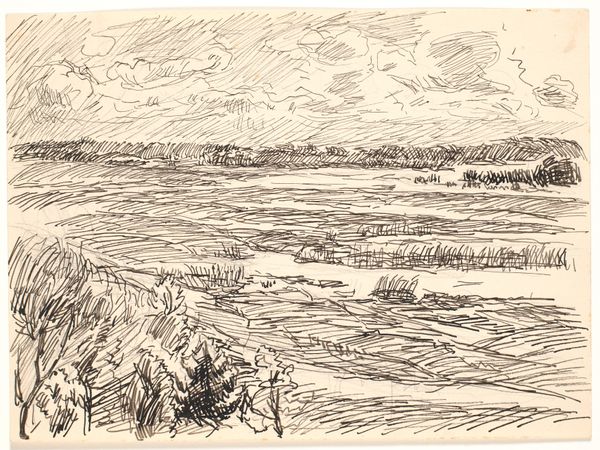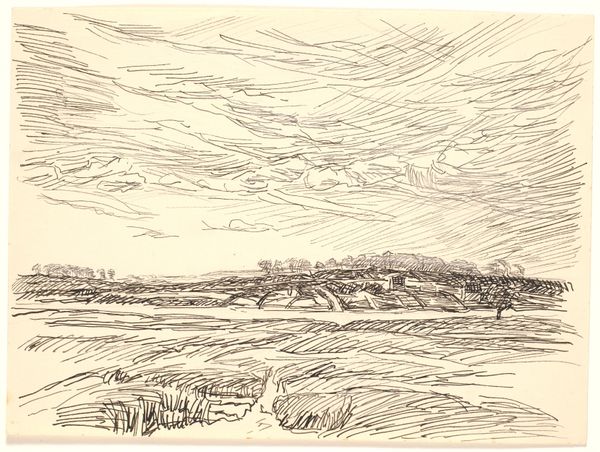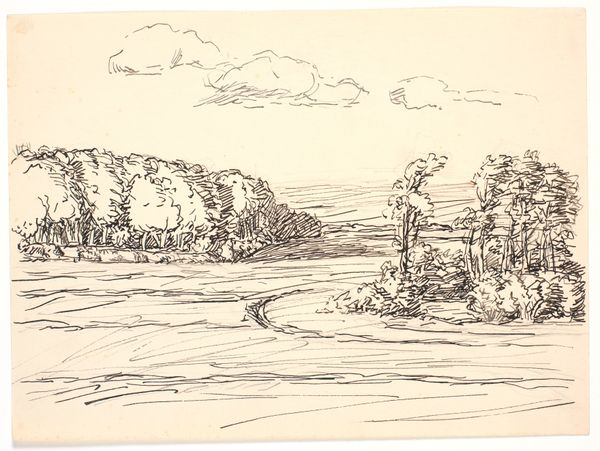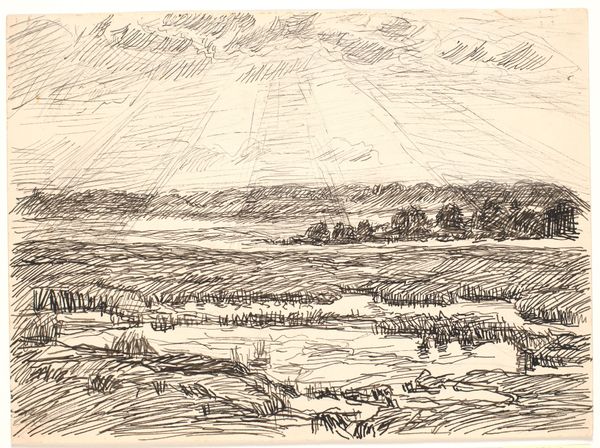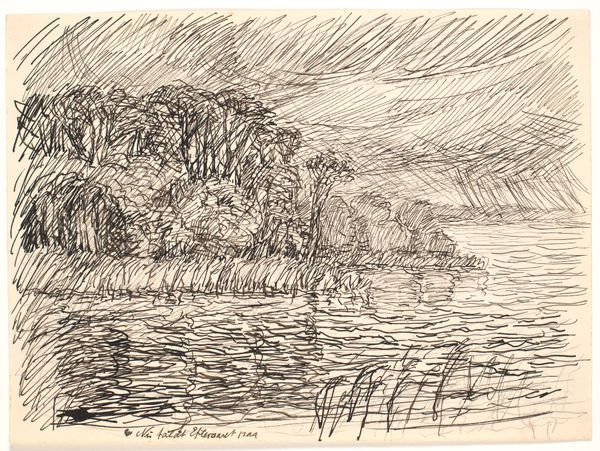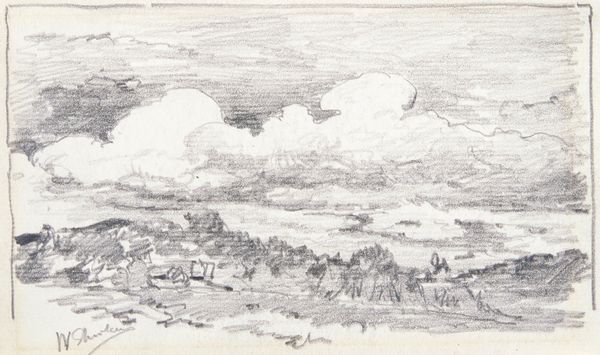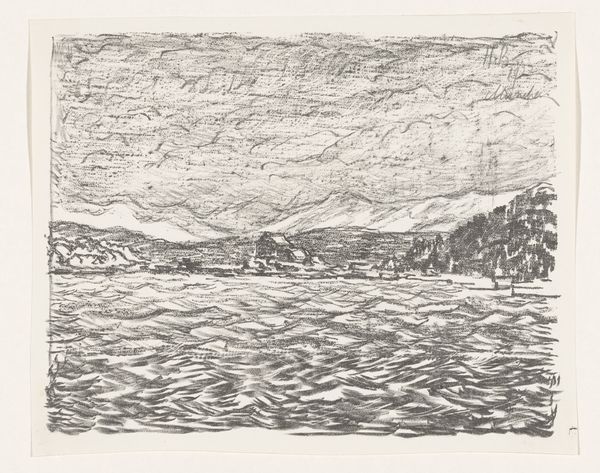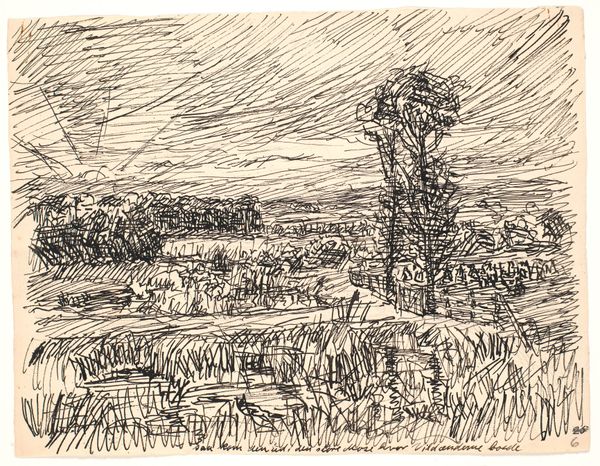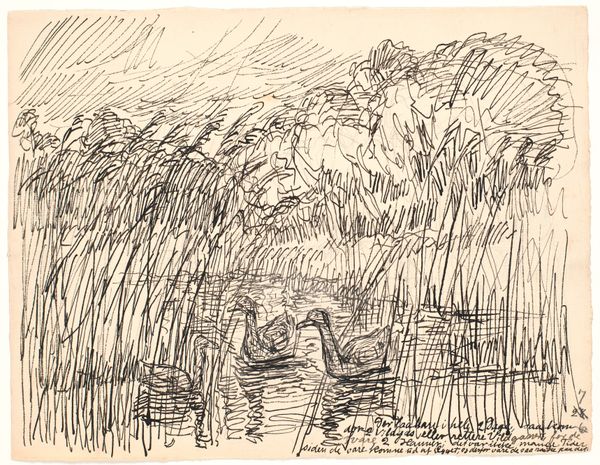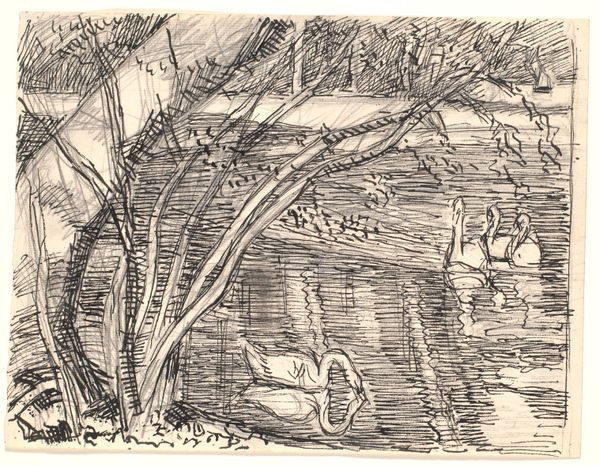
drawing, ink
#
drawing
#
landscape
#
ink
#
realism
Dimensions: 248 mm (height) x 338 mm (width) (bladmaal)
Curator: Here we have Fritz Syberg's 1928 ink drawing, "Og paa Gærdet..." which translates to "And on the Fence...". It's part of the collection at the SMK, the National Gallery of Denmark. Editor: The initial impression is one of starkness, wouldn’t you agree? The entire composition vibrates with the frenetic energy of the pen strokes. There's something unsettling in its lack of visual rest. Curator: That’s quite perceptive. The subject, rendered through this medium, is indicative of a particular artistic interest in the Danish countryside in the early 20th century. These kinds of landscapes signified a move toward simpler, rural values and the beginnings of modernism's grappling with national identity. Editor: Visually, the almost frantic hatching is what first catches the eye, a network of lines composing a somber scene. Notice how Syberg’s technique emphasizes form; see the dense scribbles giving volume to the foliage, and the more uniform strokes defining sky and water. It creates a textured, almost palpable sense of atmosphere. Curator: This almost agitated style aligns with the political atmosphere of the period. It represents a time of social upheaval, as agricultural communities wrestled with changing socio-economic landscapes and the move from agricultural land to the industrial sector. Syberg isn’t just depicting a scene; he’s hinting at a cultural narrative of a land in transition. Editor: But observe the deliberate placement of the lone bird in the lower left, its simple but sure contour against the chaos behind it. A poignant, elegant focal point which draws the viewer in. Is this the "fence" mentioned in the title? A division between this element of peaceful, grounded nature against a much less assured panorama behind? The interplay suggests something, an intentional semiotic. Curator: Fascinating interpretation! By putting these natural scenes in public galleries, artists like Syberg encouraged reflection on a time and place which might quickly disappear with growing modernization. It speaks to an active desire to shape collective memory and value specific visual narratives regarding a specific place and point in history. Editor: In sum, what starts as a mere landscape transforms under the scrutiny of form and texture, line and composition. Each aspect lends a narrative layer onto the cultural significance you elucidate. Curator: A perfect marriage of seeing and understanding, as art encourages! Thank you.
Comments
No comments
Be the first to comment and join the conversation on the ultimate creative platform.
